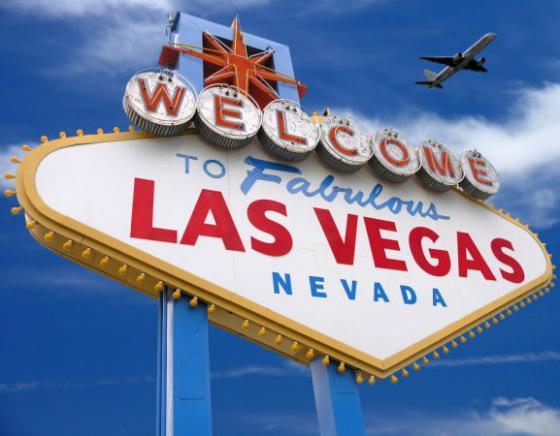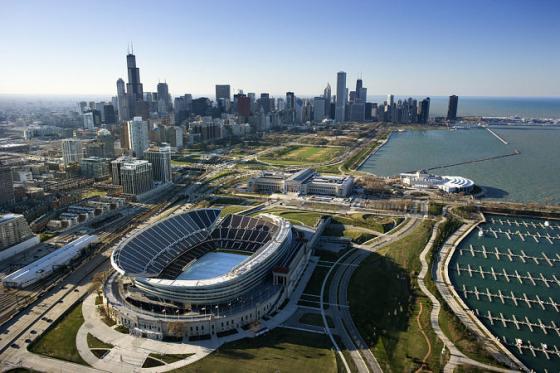
Praca w USA
Independent, czyli niezależny!! Chcesz na własną rękę lub z pomocą przyjaciół znaleźć dobrze płatną, satysfakcjonującą pracę w USA?
A może już to zrobiłeś i jedyne, czego Ci trzeba, to wiza J1, bezpieczny i komfortowy przelot do Stanów oraz fachowa opieka i doradztwo?
Pomożemy Ci zrealizować Twoje marzenia! Jeżeli dopiero planujesz pełną niezależność i nie wiesz, od czego zacząć, w FOSTER udzielimy Ci cennych, wskazówek. Program Work and Travel Independent to prawdziwe wyzwanie i wielki krok w stronę samodzielności.
Dołącz do nas - Zapisz się
Work/Travel FAQ
1. What is the Summer Work/Travel Program?
The Work/Travel Program is an exchange visitor program authorized by the Educational & Cultural Affairs Bureau at the U.S. State Department; CENET has been designated as a sponsor of this particular program. The primary purpose of the program is to promote international understanding and exchange by giving students a chance to experience the American culture and learn more about the country and its people.
2. How does the program work?
Carefully selected candidates with the proper background, motivation, experience, and maturity level with prearranged jobs are invited to come to the United States during their summer vacation to work. The sponsor of the program, will monitor the experience and act as advisor and liaison between you and your employer, as needed. You are encouraged to travel and explore the area during your free time.
3. How long is the Summer Work/Travel Program?
The Program is of 4 months' duration available only during your summer vacation from classes. Your work authorization will be limited to the time period indicated on the Form DS-2019. Participants are allowed a maximum of 4 months plus 30 days of "grace period". The program cannot be extended. Transfers from one J-1 visa to another are prohibited.
4. What is the "grace period"?
If there is no earlier date indicated on your I-94, you are allowed a 30-day "grace period" after your termination date for the purposes of travel and departure. You cannot work during this grace period, nor can you travel outside the U.S. and get back in.
5. Who is eligible?
Because Exchange Visitor Programs are strictly regulated, applicants must meet the requirements. Work/Travel candidates must be bona-fide full-time post-secondary students who intend to return home to continue their studies. Authorized health insurance is required. Participants are not allowed to work as domestics, in door-to-door sales, provide patient or in-home child care, or in jobs that require investment of money.
6. How do I get back and forth to work?
If the host company provides transportation to and from the work site, there is probably a weekly or monthly charge for this service. The fee will likely be deducted directly from your paycheck. If the host company does not provide transportation, they will expect you to make your own way to work each day, even if the housing is not close by. This can be a problem in may U.S. cities where public transportation is not available. Be sure you understand the arrangements before you leave home and make plans accordingly.
7. How do I get to my work site?
Before you travel, make two photocopies of your DS-2019, your passport, and your J-1 Visa. Leave one photocopy at home with a family member in case you need them sent to you in an emergency. Pack the other photocopy in your luggage in a separate location from the originals. If you lose your originals, these copies can aid you in replacing them.
8. What kind of visa do I need?
You will come to the U.S. in Exchange Visitor Visa status (J-1 Visa). Upon acceptance to the program and completion of all required documents, you will be sent a Form DS-2019. This form is a "Certificate of Eligibility for Exchange Visitor (J-1) Status." It officially identifies Cultural Exchange Network as your program sponsor, describes the purpose of your program, and lists the exact dates you are permitted to work. It also indicates your authorized place of employment in the U.S. and states that you have at least $1000 in personal funds available to you in case of emergency. You will take this document to the U.S. consulate in your country to apply for the Exchange Visitor J-1 Visa. You will receive detailed instructions during your pre-departure orientation concerning applying for the visa.
9. What is the Home Country Residency Requirement?
Exchange Visitors from certain countries with certain skills must maintain a residency in their home country for at least two years at the conclusion of their programs. They may not change visa status or begin another program until that two years is up. Check with CENET to find out if your country is on this "Skills List."
10. What do I do if I lose my DS-2019?
If you lose your DS-2019, contact CENET right away. Your DS-2019 can be replaced for a fee.
If you lose your passport and/or your I-94 you will need to report the loss immediately to INS. They can help you with the process for replacing your I-94. The process can take a long time so be sure to contact them as soon as you notice the I-94 is lost. To replace your passport you will need to contact the nearest Consulate for your home country. You can call FOSTER for help in locating the telephone numbers for your nearest home country Consulate and the INS office nearest you.
The Work/Travel Program is an exchange visitor program authorized by the Educational & Cultural Affairs Bureau at the U.S. State Department; CENET has been designated as a sponsor of this particular program. The primary purpose of the program is to promote international understanding and exchange by giving students a chance to experience the American culture and learn more about the country and its people.
2. How does the program work?
Carefully selected candidates with the proper background, motivation, experience, and maturity level with prearranged jobs are invited to come to the United States during their summer vacation to work. The sponsor of the program, will monitor the experience and act as advisor and liaison between you and your employer, as needed. You are encouraged to travel and explore the area during your free time.
3. How long is the Summer Work/Travel Program?
The Program is of 4 months' duration available only during your summer vacation from classes. Your work authorization will be limited to the time period indicated on the Form DS-2019. Participants are allowed a maximum of 4 months plus 30 days of "grace period". The program cannot be extended. Transfers from one J-1 visa to another are prohibited.
4. What is the "grace period"?
If there is no earlier date indicated on your I-94, you are allowed a 30-day "grace period" after your termination date for the purposes of travel and departure. You cannot work during this grace period, nor can you travel outside the U.S. and get back in.
5. Who is eligible?
Because Exchange Visitor Programs are strictly regulated, applicants must meet the requirements. Work/Travel candidates must be bona-fide full-time post-secondary students who intend to return home to continue their studies. Authorized health insurance is required. Participants are not allowed to work as domestics, in door-to-door sales, provide patient or in-home child care, or in jobs that require investment of money.
6. How do I get back and forth to work?
If the host company provides transportation to and from the work site, there is probably a weekly or monthly charge for this service. The fee will likely be deducted directly from your paycheck. If the host company does not provide transportation, they will expect you to make your own way to work each day, even if the housing is not close by. This can be a problem in may U.S. cities where public transportation is not available. Be sure you understand the arrangements before you leave home and make plans accordingly.
7. How do I get to my work site?
Before you travel, make two photocopies of your DS-2019, your passport, and your J-1 Visa. Leave one photocopy at home with a family member in case you need them sent to you in an emergency. Pack the other photocopy in your luggage in a separate location from the originals. If you lose your originals, these copies can aid you in replacing them.
8. What kind of visa do I need?
You will come to the U.S. in Exchange Visitor Visa status (J-1 Visa). Upon acceptance to the program and completion of all required documents, you will be sent a Form DS-2019. This form is a "Certificate of Eligibility for Exchange Visitor (J-1) Status." It officially identifies Cultural Exchange Network as your program sponsor, describes the purpose of your program, and lists the exact dates you are permitted to work. It also indicates your authorized place of employment in the U.S. and states that you have at least $1000 in personal funds available to you in case of emergency. You will take this document to the U.S. consulate in your country to apply for the Exchange Visitor J-1 Visa. You will receive detailed instructions during your pre-departure orientation concerning applying for the visa.
9. What is the Home Country Residency Requirement?
Exchange Visitors from certain countries with certain skills must maintain a residency in their home country for at least two years at the conclusion of their programs. They may not change visa status or begin another program until that two years is up. Check with CENET to find out if your country is on this "Skills List."
10. What do I do if I lose my DS-2019?
If you lose your DS-2019, contact CENET right away. Your DS-2019 can be replaced for a fee.
If you lose your passport and/or your I-94 you will need to report the loss immediately to INS. They can help you with the process for replacing your I-94. The process can take a long time so be sure to contact them as soon as you notice the I-94 is lost. To replace your passport you will need to contact the nearest Consulate for your home country. You can call FOSTER for help in locating the telephone numbers for your nearest home country Consulate and the INS office nearest you.
Jeśli masz pytania skontaktuj się z naszym biurem.
Foster SIS
ul. Grzybowska 2 lok. 15
00-131 Warszawa
ul. Grzybowska 2 lok. 15
00-131 Warszawa
email: [email protected]
tel. 22 331 00 50 wew. 505
Biuro czynne od poniedziałku do piątku w godzinach: 11.00 - 19.00

|

|

|
Wyślij zapytanie
Zostały podjęte wszelkie środki, aby informacje zawarte na stronie były aktualne. W ramach polityki stałego ulepszania swoich produktów FOSTER zastrzega sobie prawo do wprowadzanie w każdej chwili zmian w odniesieniu do przedstawionej oferty. Jednocześnie informujemy, że informacje zawarte na stronie nie stanowią oferty w rozumieniu kodeksu cywilnego. FOSTER nie ponosi odpowiedzialności za ewentualne nieścisłości lub niedokładności. Powielanie w jakiejkolwiek postaci oraz jakąkolwiek techniką części lub całości treści i elementów graficznych strony bez uprzedniego pisemnego zezwolenia FOSTER jest zabronione. Copyright © 2008 - 2013 FOSTER, wszelkie prawa zastrzeżone.
Używamy cookies i podobnych technologii m.in. w celach: wiadczenia usług, reklamy, statystyk. Korzystanie z witryny bez zmiany ustawień Twojej przeglądarki oznacza, że będą one umieszczane w Twoim urządzeniu końcowym. Pamiętaj, że zawsze możesz zmienić te ustawienia.
Używamy cookies i podobnych technologii m.in. w celach: wiadczenia usług, reklamy, statystyk. Korzystanie z witryny bez zmiany ustawień Twojej przeglądarki oznacza, że będą one umieszczane w Twoim urządzeniu końcowym. Pamiętaj, że zawsze możesz zmienić te ustawienia.



